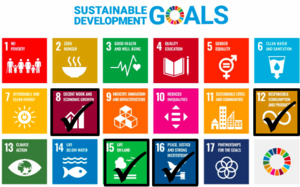
Economizing Nature
The UN System of Environmental-Economic Accounting (SEEA) in conjunction with regional and national regulations enforces the demands for complex and dynamic information availability, coherence and synergies for substantial improvements in documentation, planning, decision making and operational actions.
The loss of biodiversity and ecosystem services, which underpin nearly all of the Sustainable Development Goals indicates on transformative changes that are needed to ensure biodiversity conservation, its sustainable use, and the multi-faceted, careful and all-of-society based definition and implementation of ecosystem services upon which all life depends.
Socio-economic approaches also consider human factors, societal, (psycho-)social, cultural, ethical as well as organizational aspects. The specific difference lies in enabling inclusive participation not only in documentation, planning, implementation and evaluation of goal-reaching success but also in take-up of suggestions for consideration in revised actions and adaptation plans.
Natural capital affects the impacts of natural hazards, e.g. mangroves can protect against floods and cover crops against drought. Quantifying these benefits is key for a more holistic cost/benefit analysis of nature restoration or conservation efforts.
The systemic impacts of hazards affecting nature are beyond those directly captured. The economic impact of a food security shock (through malnutrition, stunting, livelihoods, long term investment etc.) are greater than direct agricultural losses. Quantifying these impacts give a more accurate indicator of the Disaster Risk Reduction value of nature.
The complete set of information management best practice methods especially supports the principles of “critical thinking”, enabling extensive reporting, transparent analysis, compliance to regulations and other boundary conditions. Information control obligations include phases of retrace, audit, reexamination, analysis, avoidance of malpractice, and indications on situation robustness, weaknesses and vulnerabilities.
Topics:
• Economics and the Environment
• Competing Land Cover and Land Uses
• Accounting and Costing Nature
• Food security and Sovereignty
• Economics of Landscape Restoration
• Market and Non-Market Valuation Techniques
• Ownership of Nature Goods and Services
• Indigenous and Nomadic Peoples Interests
• SEEA Conflicts
• Valuing Status, Development and (historic, current, future) Ways of use
• Nature Restauration in PostIndustrial Regions
• Restoring Marine Biodiversity
• Scenarios beyond Economic Growth
Ecosystem Goods and Services:
• Supply of water
• Carbon sequestration
• Supply of timber
• Non-timber forest products (food and medicine)
• Food
• Recreation
Costs Types:
• Operational costs
• Foregone opportunities
Economic Instruments:
• biodiversity-relevant taxes,
• fees and charges,
• tradable permits,
• biodiversity offsets,
• payments for ecosystem services
Analysis:
• thresholds, tipping points
• minimizing biodiversity loss
• Limits of Cost-Benefit Analysis
• Models, Solutions and Alternatives
• maximizing investment into nature improvement effectiveness
• ecology stability measures, equilibrium, robustness
• economic indicators and alternative welfare paradigms
Scenarios:
• Facts, Situation, change, goals, actions, monitoring/control
• Dependencies
• Processes
• Context Models
• Observatories
Assessments:
• systematically identify public subsidies harmful to biodiversity or the environment
• Finance Impact Analysis
Decisions:
• Facts, Situation, change, goals, actions, monitoring/control
• Processes
• Dependencies, context models
• Observatories
• Elements of (permanent) Governance
Actions:
• Facts, Situation, change, goals, actions, monitoring/control
• Actions Research
• Processes
• Dependencies, context models
• Observatories
• Protection by development
• Synergistic protective and pro-development effect
Expected outcome of Special Track “Economizing Nature” Research and Development Questions related to Information Management:
• Existing questions (extensions, refinement)
• Discontinuities as chances for adaption
• Goal Reaching Management and Progress Reporting
• Quantifying biodiversity-related expenditures
• Governance needs
• Food security and sovereignty
Information Management:
• Information distortion and fraud
• Manageable Information on Social dimensions
Addressed Sustainable Development Goals:
The processing and use of information according to the requirements of the UN System of Environmental-Economic Accounting (SEEA) holds enormous potential for new ways of enabling justin-time foresight, situation management and ex-post evaluation. For a successful decision and action support, we have to make the best possible use of this potential.
This track is organized in cooperation with CODATA-Germany and SusInf Community of Experts. Submissions and participation recommended for stakeholders in Nature Economy R&D, Governance and Practice: Science, Public Administrations / Law Enforcement Agencies, Private Sector, and NGOs.
Special Track Co-Chairs:
Horst Kremers, CODATA-Germany (Berlin, Germany), SusInf.net
Józef Hernik, University of Agriculture (Krakow, Poland)
Sahil Shah, Alliance to Feed the Earth in Disasters (ALLFED), (Great Britain)



